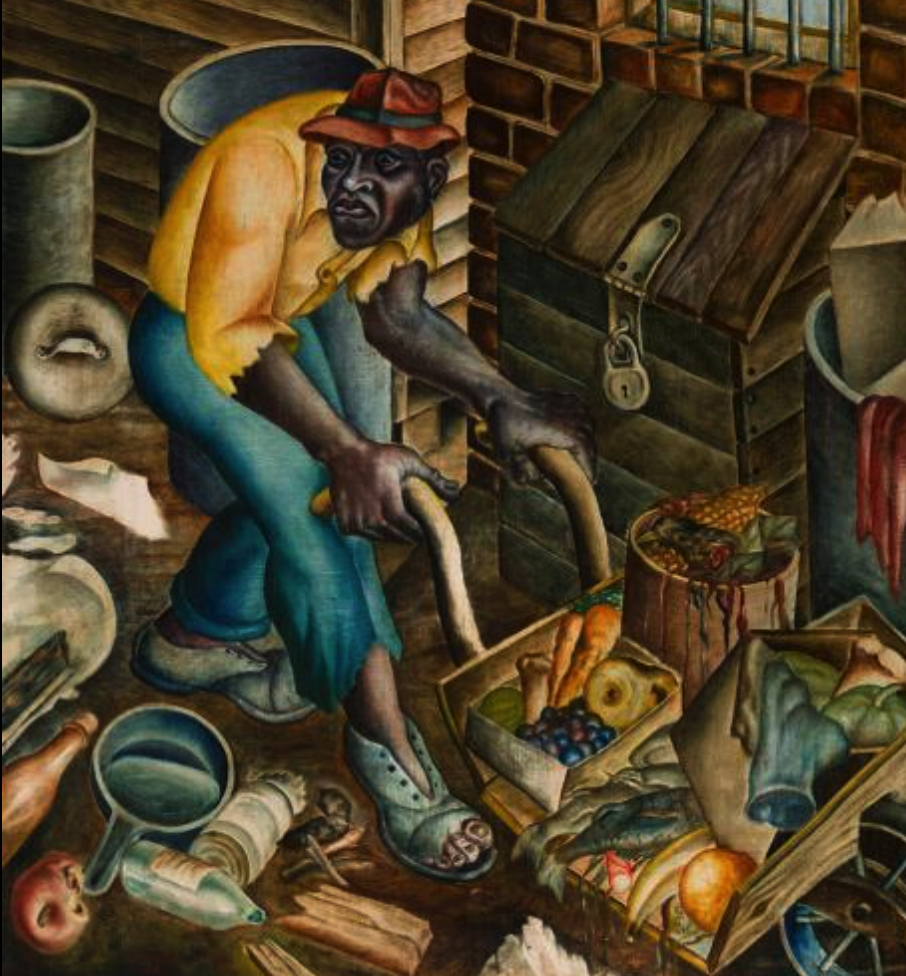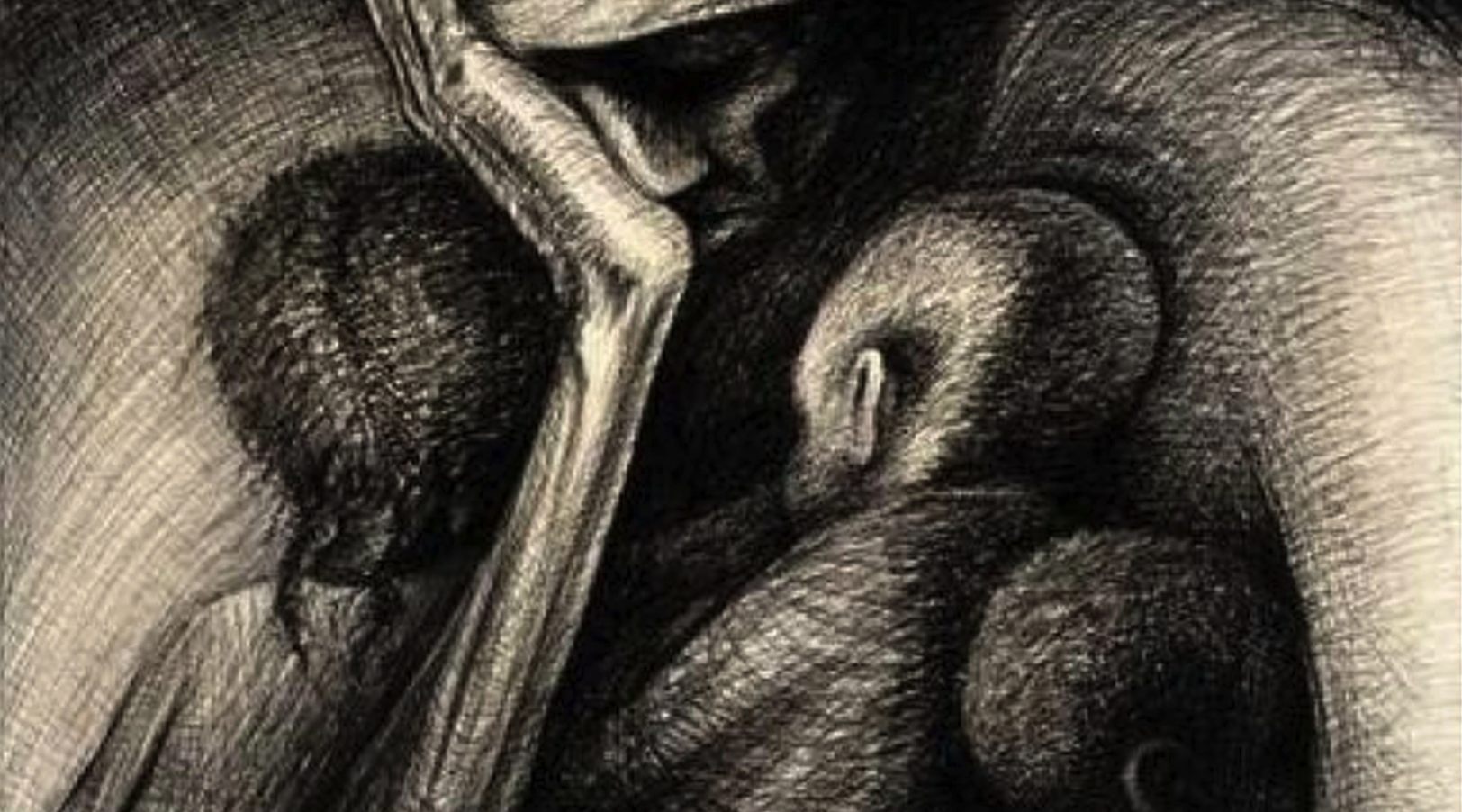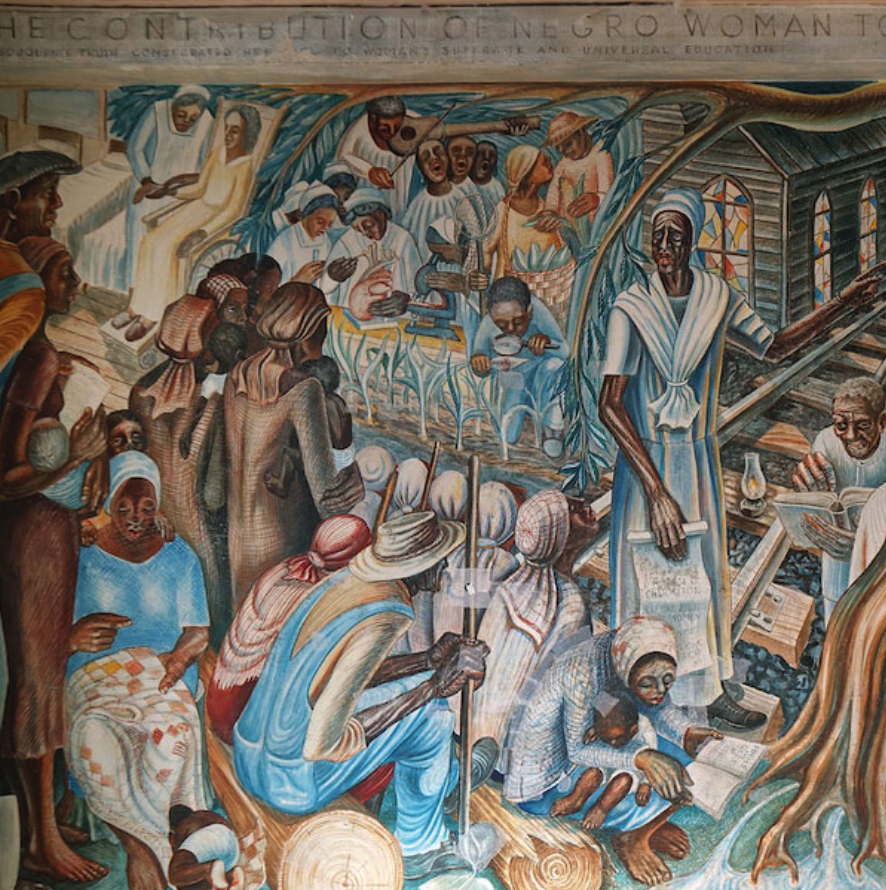John Biggers: My America
John Biggers and his art
John Biggers: My America
John Biggers (1924-2001) created paintings, drawings, sculptures, and murals of historical importance. Yet his contribution to American art when largely unrecognized, and only now is he having his first solo exhibition in New York at the Michael Rosenfeld Gallery. The artwork on display was made in the 1940s and 50s as Biggers worked to represent what he called "My America."
An African-American, Biggers was born the youngest of seven and raised in the segregated South. After serving in WWII, he earned a Ph.D. in art from Penn State and went on to head the art department at Texas State University. In the early 20th century, African American intellectuals like Dr. Alain Locke challenged African American artists to reject European traditions and create a new art form based solely on their African heritage. Biggers was one of the first artists to travel and study in Africa. His contact with matriarchal societies influenced his depictions of strong women running the marketplaces and grandmothers standing proudly as the head of the family. But he wasn't persuaded by modernism or primitivism styles of art. Realistic depictions of African Americans created by African Americans were rare at that time, and Biggers felt it was essential to include their faces and stories in the art historical record, particularly their struggle for civil rights.
To best serve his goals, he chose Social Realism. This dreamy, stylized form of realism glorified ordinary people, and Biggers used it to symbolize the black community's outward struggles and inner strengths. Prominently featured in the gallery, The Garbage Man is an excellent example. It depicts a raggedy, hunched-back man pushing a makeshift wheelbarrow through a filthy alley, searching for leftovers. Behind him, a window is barred and a door padlocked; only the garbage cans are open. Despite his degradation, the man's eyes are sharp and searching, his clothes colorful, and his cart full.
Old Couple, softly painted in earthy browns, is a portrait of elderly parents. Their eyes are cast down, their hands gesturing disbelief and sorrow as they stand close together beneath a tree branch hung with a rope. Reminiscent of traditional religious paintings, Biggers used one family's grief to impress on viewers the tragic consequences of racism. The artist used his visual voice to explore a range of social ills such as drugs and poverty, as in the painting Blind Boy and Monkey. A thin teenager sits playing guitar for tips as a devilish monkey chained to his wrist. And Sharecropper features an old farmer in overalls; his head buried in his worn hands.
Mexican muralists influenced his later work, and he abandoned social critiques and began creating inspirational murals. Many still dot the American landscape. The gallery features a sizeable preliminary drawing title, Web of Life, which features African-American farmers as the universal symbol for humanity.
John Biggers wanted to reach a broad audience, and he lived long enough to see his emotionally compelling pictures valued for their contribution to American art.



